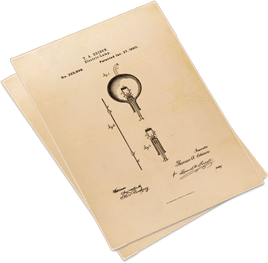Inventors frequently file provisional patent applications prior to the regular filing, but why? What exactly happens to a provisional application and what value does it provide?
A provisional patent application will not mature into a patent. In fact, it’s highly unlikely that anyone at the United State Patent and Trademark Office (USPTO) will even look at the application. In order for the invention that is disclosed in the provisional application to become a patent, the applicant must file a formal application within one year of the provisional filing.
So why file a provisional patent application? First, it reserves the applicant’s rights to the invention as of the filing date. Once the provisional has been filed, the applicant has “patent pending” status in the invention, and can proceed to disclose that invention to the public without worrying about having someone else beating him or her to the patent office or worrying about being barred from patentability due to a prior public disclosure.
Once the provisional application is filed, the applicant has one year to market the invention, to work with manufacturers and distributors, to broaden testing and development or to simply fine tune the implementation, and to publish research results and present the new technology at conferences or board meetings. In short, filing a provisional patent allows the applicant to bring the invention out into the public to see what value it really has.
In addition, the typical provisional patent application is simpler and less expensive than the formal filing. This advantage can be important for a number of reasons. First, if an applicant is about to make a public disclosure that could affect a statutory condition of patentability, a provisional application can be filed quickly to protect those rights. Second, it provides the applicant with another year to decide whether or not to pursue the full application and with the potential to save money in the long run, if it becomes evident over the course of that year that the invention is impractical.
Finally, there can also be a timing benefit. A utility patent has a 20-year term from the filing date of the formal application, not from the filing of the provisional application. Historically, successful patents are more profitable at the end of their term than they are in the beginning, and as a result, delaying the regular filing by a year can effectively add a highly profitable year to the end of the patent term.


